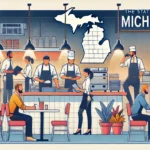CRA’s Brian Hanna announces $ 4.4 million in state funding for a state cannabis reference laboratory.
The Executive Director of the Cannabis Regulatory Agency announced on July 20, 2023, that the agency has secured funding for a state-run cannabis testing facility. Out of the $4.4 million dollars they will receive, $2.8 million will be for the startup capital expenditure.
Pursuant to state law, all cannabis sold at retail stores must pass safety compliance testing by one of the state’s 26 licensed laboratories. Other than third-party accreditation, there is not much guidance on how these labs scientifically operate. Due mostly to the federal prohibition of cannabis, their methods are not uniform, which generally leads to inconsistent results.
Currently, the CRA has to rely upon third-party testing to verify results which has caused problems. With their own laboratory, they will perform the secondary testing themselves. They will be able to independently test marijuana products for the purposes of their investigations. Further, they will seek to increase confidence in the testing industry by performing audits of the licensed safety compliance facilities.
In 2021 the CRA quarantined 64,000 pounds of marijuana, accusing the state’s largest safety compliance facility of falsely inflating THC percentages, thereby creating invalid or unreliable results. The CRA then filed formal complaints against Viridis Labs, headquartered in Bay City, alleging that they intentionally inflated the THC concentration, which would cause cultivators to use them as opposed to other labs. A state-run reference laboratory would assist the CRA with investigations, and complaints such as these, which rocked the industry at the time, would presumably be more valid.
They will also assist in industry standardization by developing and optimizing testing methods. Because cannabis has been federally illegal, there has been no federal testing or guidance about the testing methodology that exists in other industries. Without any guidance, individual states and labs can create their own methods, which can lead to different results. The CRA, along with the opportunity to work with other states, can come up with standardization of methods and reporting.
Not everyone is in support of the state having its own lab. Due to the lack of federal guidelines, many believe that the state could come up with methods and rules that are not scientifically valid. Should the CRA begin to create unreasonable rules under the name of “science,” it could cause disruption in the testing industry. Time will tell this story because the CRA’s reference lab is coming. Hanna projected that it would take a year to build, equip, staff, and validate the equipment. They have already begun the RFP process, and this is one of their top priorities.





